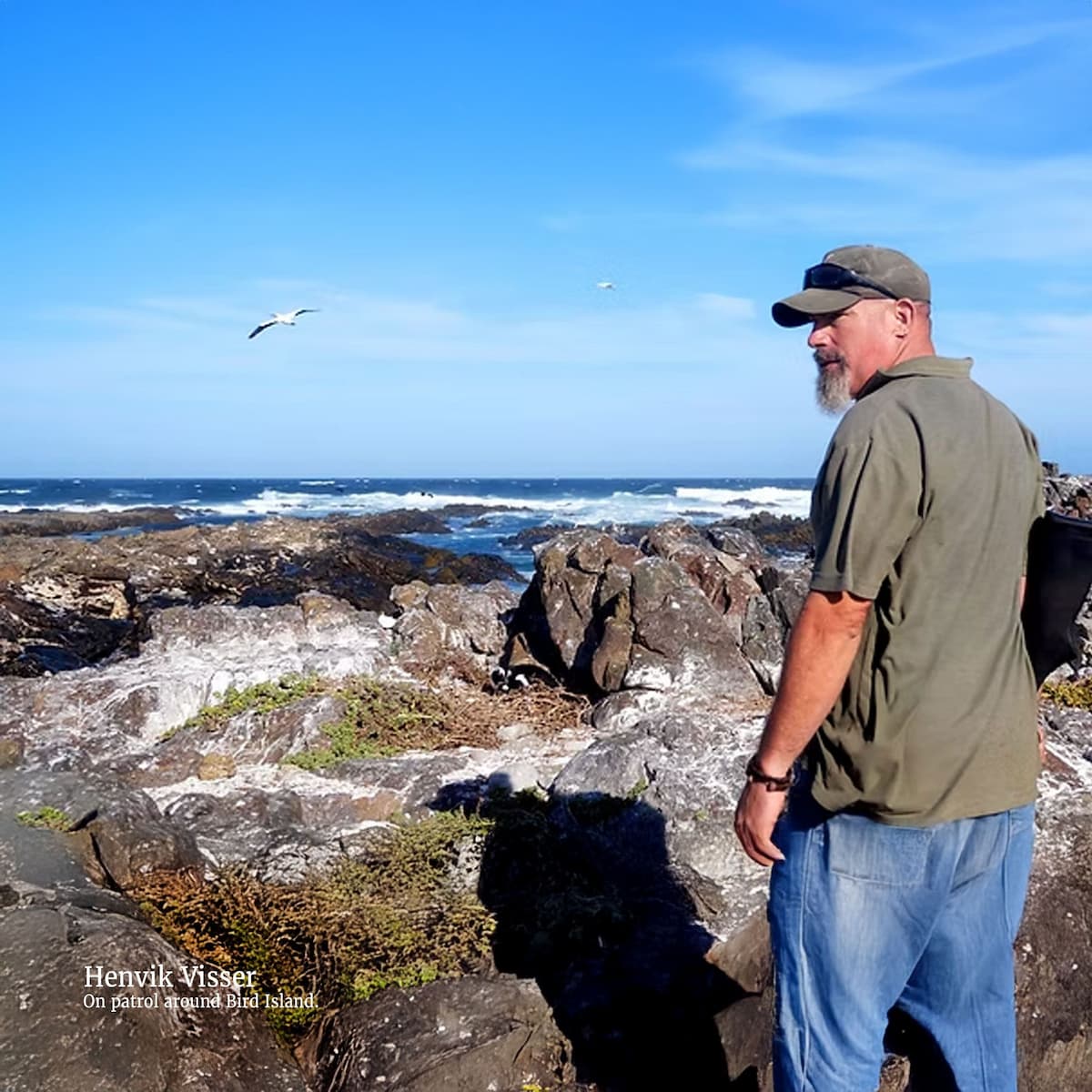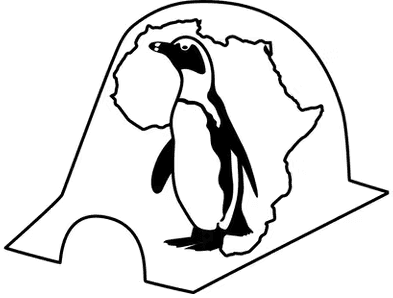Tiny Oval
"The tiny oval of Bird Island sits off the South African coast, hardscrabble, windswept rock holding fast against the relentless pounding of the Indian Ocean. It’s barely visible from the massive mainland sand dunes of Addo Elephant National Park, more than four miles away."
By Laurie Holloway
Nest Project Storyteller
Just 47 acres of sand, rock and scrub, Bird Island’s fig marigold, duneweed and goosefoot provide scant cover for humans and seabirds alike. The even smaller, rock-strewn Seal Island (1.5 acres) and Stag Island (.25 acres) lie just over 1,000 feet north, reachable only by boat. South Africa has designated all three islands and the waters surrounding them as nature reserves, part of Addo Elephant National Park.
A tall, graceful red-and-white lighthouse, built in 1898, rises above the southern end of Bird Island, overseeing breeding areas for the small African penguins and the huge Cape gannet. The islands are off-limits to the public, home only to SANParks rangers. On rare occasions, conservation experts are allowed to visit, and our artificial nest team was one of those groups.
Accommodations are primitive, just small concrete buildings with spartan beds and basic kitchens. A desalination plant provides fresh water – sometimes. Electricity can be fitful. Mattresses must be sprayed for penguin lice and other creepy-crawlies before we can fall into them, exhausted.
The rangers who live here for weeks bring their food – no groceries on this land. Henvik Visser, a massive former South African Army Special Forces veteran, is the chief of the Algoa Bay Marine Protection Unit. He and his rangers walk these shores each day, searching for sick or injured penguins and other wildlife. Carcasses are taken to the remains of an old guano storage building, where blood is drawn and sent to the mainland for testing. The remains are burned to prevent an outbreak of a contagious disease that would spell disaster for the critically endangered penguins. The rangers, armed with rifles, also make other difficult calls. Fur seals that attack penguins must be culled, as are kelp gulls that lay waste to penguin eggs.
And they watch for poachers, arresting any who try to remove prized abalone from the waters.

Henvik Visser on patrol around Bird Island.
Indeed, it’s a never-ending battle to protect the marine preserve. In Henvik’s tidy quarters, a wall is covered with more than 100 long, brightly colored plastic jig hooks – special lures, studded with multiple rows of pronged hooks, to catch squid. He picked them up in less than a month from Bird Island’s shoreline.
Each patrol also yields plastic, so much plastic: water bottles, snack bags, foam insulation. It’s a sobering sight, strewn along this isolated island miles from the continent. But plastic knows no boundaries, permeating even the deepest reaches of the oceans and even the raindrops that fall from the sky. Yet no matter how difficult the conditions, this island must be protected. It’s home to nearly half of the last remaining colonies of African penguins.
The birds are victims of the ruthlessly efficient stripping away of centuries’ worth of guano – poop – for use as fertilizer. The guano layers, deposited by seabirds over centuries, offered birds a place to nest that protected their eggs and chicks from predatory gulls and brutal heat.
When the guano was taken, the result was catastrophic: Penguin numbers plunged 99 percent. Today, just 20,000 breeding pairs remain, down from 2 million pairs just a century ago, and the species perches on the edge of extinction.





